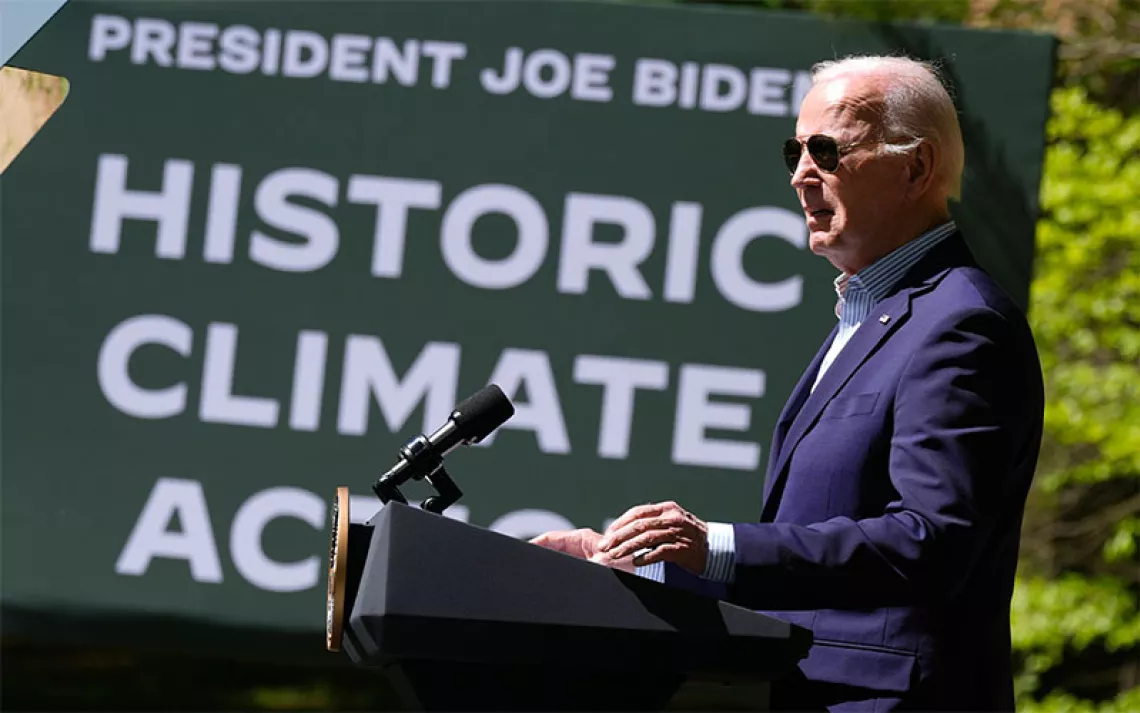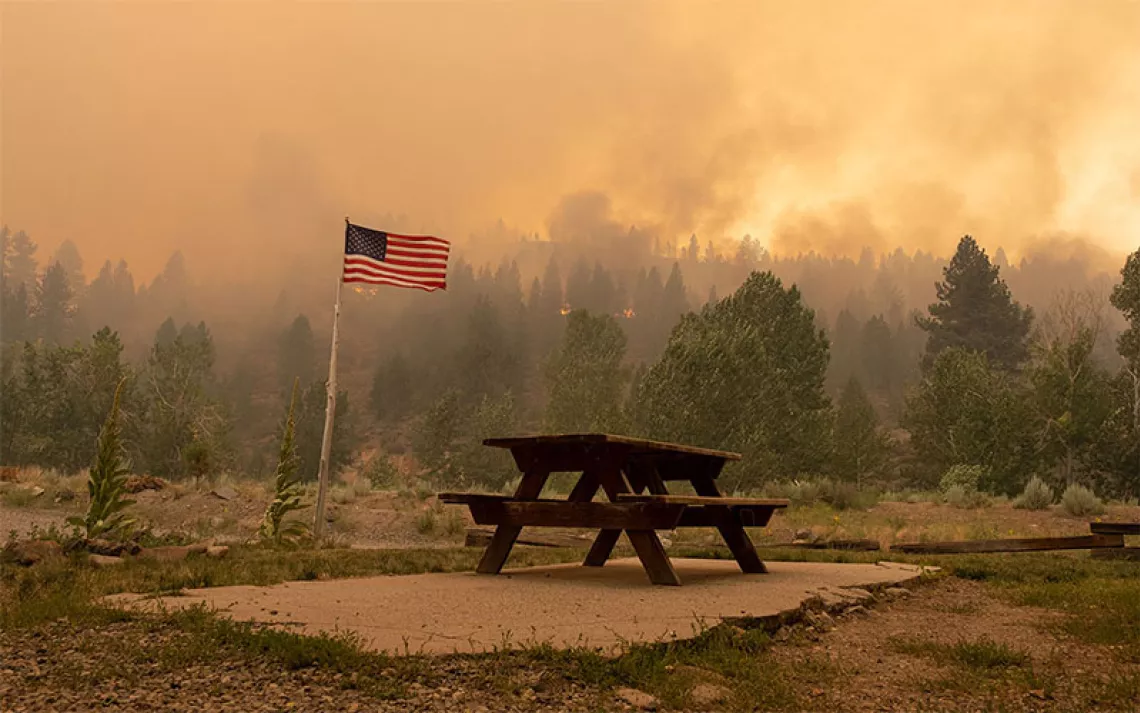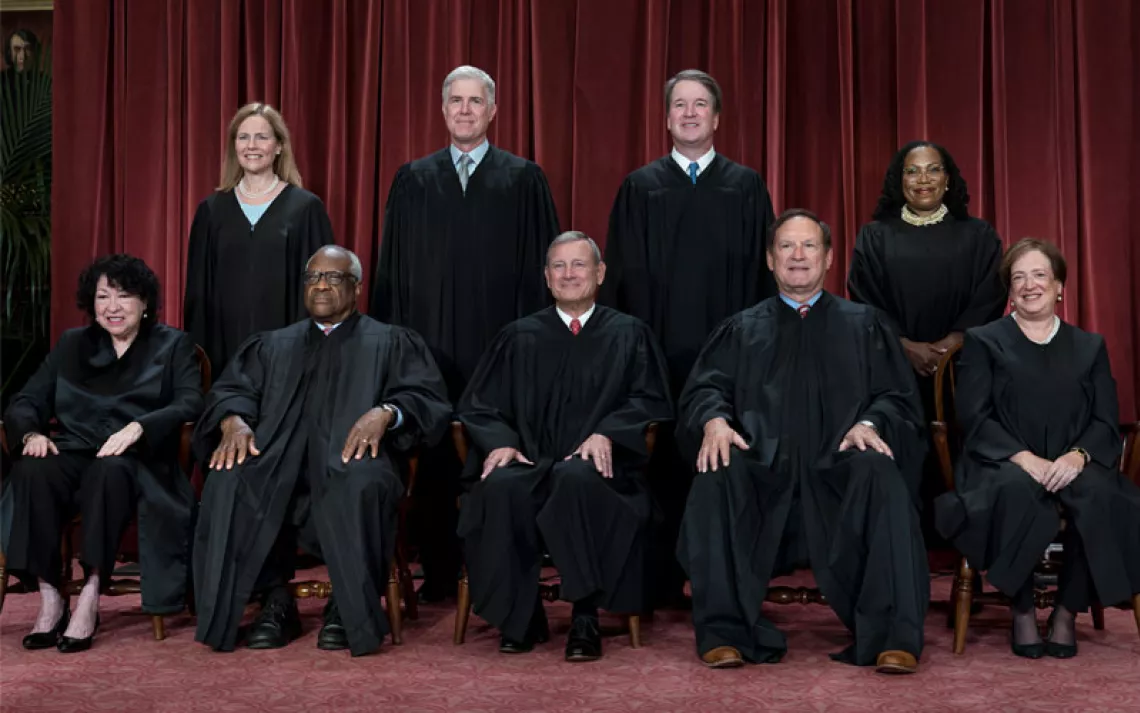A 17 Million Car Pile-Up
The Trump administration’s plan to freeze tailpipe regulations could wreck the auto industry

Traffic in Los Angeles | Photo by iStock/LazyDay
On Thursday morning, the Trump administration announced a plan to freeze regulations that require any automaker that sells automobiles in the United States to steadily ramp up the fuel efficiency of its cars and trucks and ramp down the amount of pollution they put into the troposphere.
This is a terrible idea for many reasons. The pollution currently generated by the nation’s tailpipes is already too high—both for the tiny lungs of the kids who happen to live near lots of traffic, and because it’s scientifically well established that those car emissions are making climate change even worse than it is already. Here’s another reason the proposed rules are terrible, which you may not have considered: The Trump administration just handed America’s automakers the exact tools to wreck themselves—again.
I spent the 1990s growing up in Metro Detroit, watching my parents get periodically laid off and also watching the car get eclipsed by the SUV. Automakers had figured out that if they bolted a car body onto a truck chassis, they could sell it for a much higher profit margin. SUVs got terrible mileage, but gas prices were low, and big cars felt safer on the highway, especially as those highways filled up with even bigger vehicles, often decked out with steroidal flourishes like running boards and cow-catchers.
Then, in 2008, gasoline prices spiked. Anyone who could afford a new car was definitely not in the market for a land yacht. And, as it turned out, U.S. automakers had not spent the years when they were flush with cash working on more-fuel-efficient vehicles. Instead, they had spent that time fighting increased fuel economy standards. Meanwhile, the Toyota Prius was so in demand that there was a waiting list.
President George W. Bush had to use $17.6 billion in government funds to keep General Motors and Chrysler afloat. After Barack Obama entered the White House, the two U.S. automakers filed for bankruptcy and received a second, $80 million bailout. One condition of that taxpayer bailout was an agreement by the automakers to accept mandated fuel economy improvements. In 2010, the EPA, the Department of Transportation, the National Highway Traffic Safety Administration, and the state of California negotiated a dramatic improvement in fuel efficiency for the some 17 million new cars and trucks sold in the United States annually.
Gradually, things got better. Even after gas prices dropped again and people started buying trucks and SUVs once more, the new fuel efficiency and greenhouse gas standards kept the research and development dollars flowing. Ford began experimenting with aluminum trucks, which weighed less and had more towing power. GM sold pickups with engines that could switch from four to two cylinders, saving gas when four cylinders weren’t needed. Ford, GM, and Chrysler all began selling hybrids—and even some all-electric vehicles. None of this made as much money for auto companies as just selling the same old SUVs and pocketing the difference, but the higher fuel efficiency was putting less pollution into the air and saving drivers thousands of dollars in gas.
It’s unclear whether today’s proposed rule change is what auto companies really wanted when they began asking the Trump administration to cut them a break on fuel efficiency standards.
Even if they didn’t like the standards they had agreed on, those standards provided certainty. The Trump administration’s move—fueled by the president’s eerie obsession with erasing all of Obama’s accomplishments—is bound to make the auto market a big hot mess.
As soon as the 60-day comment period is over and the administration moves to make its proposal a formal rule, the EPA is going to get sued by almost everybody. It’s going to get sued by environmental groups [Full disclosure: environmental groups like the Sierra Club], and it’s going to get sued by at least a dozen states, led by California. The Clean Air Act waiver granted to California to set its own tailpipe emissions standards won’t be easily undone. “The Feds don’t have the authority to revoke a waiver,” says Dan Becker, director of the Safe Climate Campaign. “That wasn’t written into the Clean Air Act. They can deny a waiver but not revoke it years later.”
And the Obama-era fuel efficiency and greenhouse gas regulations were crafted with buy-in from all parties (including automakers) just a few years ago. “These standards were very carefully designed and affirmed by EPA in January 2017, after a through review,” says Ann Mesnikoff, federal legislative director of the Environmental Law & Policy Center. “This administration can try to make new weak standards, but they can’t ignore the strong record that’s already there.”
The Corporate Average Fuel Economy (CAFE) law requires DOT to set fuel economy at the maximum technically feasible level, adds Becker. It will be difficult for the National Highway Traffic Safety Administration or car companies to claim in court that the maximum fuel economy improvement they can achieve for the next seven years is zero. “A judge is going to look at them and say, 'Can you really say that with a straight face?'” Becker says.
The U.S. auto industry is already bound for dangerous waters. Subprime car loans offered to people with low credit scores have been artificially inflating the number of new cars that are being sold, and the rate of delinquent borrowers is on the rise. A major spike in gas prices could lead to wide-scale defaulting on those loans, flooding the market with cars that no one can afford to drive.
Meanwhile, automakers based in other countries are racing to become industry leaders when it comes to electric vehicles. China is considering banning internal combustion vehicles altogether, and several other countries have announced plans to do so. Designing better, more-fuel-efficient cars might not be the biggest moneymaker for them right now, but it will insulate their citizens—and their economies—from the shock of high gas prices.
The Trump administration acts like it just delivered a huge gift to U.S. automakers. Instead, it's just sent Ford, Chrysler, and GM down a dead-end street.
 The Magazine of The Sierra Club
The Magazine of The Sierra Club



